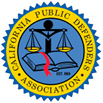Overview:
Possession of a controlled substance is, in many cases a crime. In addition, California law criminalizes the possession of specified ingredients or precursors that can be used to manufacture certain illegal substances such as PCP or methamphetamine. The governing laws for drug possession are California Health and Safety Code Sections 11350, 11377, and 11357.
As you may already know, the state of California has legalized marijuana, to a certain extent, for recreational use, and legalized it some time ago for medical uses. However, this does not mean that you cannot be prosecuted for possession of marijuana, and does not affect criminal prosecutions for possession of other drugs. There are strict conditions placed on the legal possession of marijuana and other types of drugs (e.g., opiate pain killers,) and violating those conditions could subject a person to criminal prosecution.
Health and Safety Code Section 11350 makes it illegal to possess opiates such as heroin and opium, and other opiates that can be possessed only with a valid prescription such as OxyContin and Vicodin.
Neither marijuana nor stimulants are covered by Health and Safety Code 11350. California Health and Safety Code sections 11357 and 11358 apply to possession of marijuana.
Possession of methamphetamines and other stimulants is covered by Health and Safety Code section 11377.
Legalization of Marijuana Possession:
Following the passage of Proposition 64 in 2016, it became legal for adults over the age of twenty-one to possess a certain amount of marijuana or cannabis products. However, there are strict limits in place, and going over those limits can subject a person to criminal prosecution. Also, marijuana possession is still illegal for minors and adults under the age of twenty-one.
For a person under the age of eighteen, possession of less than an ounce of marijuana is a violation of Health and Safety Code Section 11357(a)(1) and is an infraction only punishable with drug counseling or education and community service. The amount of counseling/education and community service to be determined by whether it was a first or repeat offense. Possession of more than an ounce of marijuana is still an infraction, but is punishable with a larger amount of counseling/education an community service.
For an adult between the ages of eighteen and twenty-one, possession of less than an ounce of marijuana is a violation of Health and Safety Code Section 11357(a)(2) and is an infraction, only punishable by a fine. Possession of more than one ounce of marijuana is punishable as a misdemeanor.
Possession of more than an ounce of marijuana is a misdemeanor and is punishable by up to a year in county jail.
For adults age twenty-one and older, possession of less than one ounce of marijuana is now legal. However, possession of more than an ounce of marijuana is a misdemeanor.
Possession of a concentrated cannabis product (e.g., hashish) is treated the same as marijuana, except that the threshold is eight grams, rather than one ounce.
What Does it Mean to be in "Possession" of Drugs:
Possession can be either actual or indirect. Actual possession is if the drug is found on your or in close proximity such that it is obvious that you had control of the drugs. Indirect possession is when you may not have had the drugs on you but you had the control of the drugs or the right to control them. Examples of indirect possession would be if you are driving the car and the drugs are found in the trunk of the car, or if the drugs are found on another person but you both intended on using the drugs.
How Does a Prosecutor Prove Drug Possession:
To prove a defendant is guilty of drug possession, it is up to the prosecutor to prove the following:
- The defendant illegally (unlawfully) possessed drugs (controlled substance(s)); and
- The defendant was aware he was in possession of the controlled substance; and
- The defendant was aware that what he possessed was, in fact, a controlled substance; and
- The defendant was in possession of a useable amount of the controlled substance.
So, what is a "useable amount?" In short, a useable amount is any amount, however small, that can be used. The amount does not even have to be enough to get someone high. However, it is not a usable amount if it is only residue or traces of the drug.
Penalties For Violating Health and Safety Code Section 11350, 11357 and 11377:
Controlled Substances Other than Marijuana - Section 11350 and 11377:
Prior to 2014, the penalties for drug possession in California could be quite severe, and were often prosecuted as felonies. However, voters decided that this should change, and passed Proposition 47, which drastically changed the penalties for possession of controlled substances in California.
Proposition 47 made the possession of controlled substances a misdemeanor, reducing the sentence to three years of probation and a maximum of one year in jail. Under proposition 47, even those that have been convicted of the above crimes as felonies, can file a petition to have the charges reduced to misdemeanors retroactively. The only exceptions to eligibility apply to possession by certain offenders with past convictions for a narrow range of violent crimes, and to possession by registered sex offenders. In these cases, possession could still be prosecuted as a felony, carrying a maximum penalty of three years in prison.
In addition, those accused of possession of controlled substances on a first offense are usually eligible for drug diversion under Penal Code Section 1000. Also, if you are ineligible for drug diversion because you have a prior conviction of a drug offense you might be eligible for treatment under Proposition 36 or drug court. Proposition 36 or drug court offer a more intensive drug treatment program but if the program is successfully completed the charges will be dismissed and cannot be used against you to deny you any employment or professional license.
Possession of Marijuana - Section 11357:
If you are an adult, age twenty-one or over, you can legally possess up to one ounce of marijuana, or up to eight grams of concentrated cannabis. If you are not age twenty-one or over, or you are in possession of more than the legal limit, the following penalties apply:
For a first offense by a minor, possession of less than an ounce of marijuana is an infraction and can result in:
- Up to four hours of drug or education or counseling; and
- Up to ten hours of community service.
For a repeat offense by a minor, possession of less than an ounce of marijuana is an infraction and can result in:
- Up to six hours of drug or education or counseling; and
- Up to twenty hours of community service.
For a first offense by a minor, possession of more than an ounce of marijuana is an infraction and can result in:
- Up to eight hours of drug or education or counseling; and
- Up to forty hours of community service.
For a repeat offense by a minor, possession of more than an ounce of marijuana is an infraction and can result in:
- Up to ten hours of drug or education or counseling; and
- Up to sixty hours of community service.
For an adult under the age of twenty-one, possession of less than an ounce of marijuana is an infraction and can result in:
- A fine of not more than $100.00.
Any adult (over the age of 18,) who possesses more than an ounce of marijuana, is guilty of a misdemeanor and can be subject to :
- Up to six months in a county jail; and
- A fine of up to $500.00.
It is also prohibited for any person to take marijuana onto K-12 school grounds at any time the school is open for classes or other programs.
If a minor takes marijuana onto school grounds, it is an infraction and the penalty is the same as possession of more than one ounce of marijuana.
If an adult takes less than an ounce of marijuana onto school grounds, it is a misdemeanor, the penalty for which is a fine of up to $250.00 for a first offense, and up to ten days in a county jail and/or a fine of up to $500.00. If an adult takes more than an ounce of marijuana onto school grounds, the same penalties apply as possession of more than an ounce.
Common Defenses:
- The defendant was authorized to be in possession of the controlled substance because they held a valid, doctor-issued, prescription;
- The Defendant was unaware of the presence of the drugs (did not actually possess the drugs);
- The Defendant did not know the substance in their possession was a drug;
- The Defendant only held the drugs temporarily in order to dispose of them (You can hold onto drugs for a short time, but just long enough to dispose of them. However, this doesn't apply if the only reason you get rid of the drugs to avoid being caught holding onto them by the police.);
- There was such a small amount of the controlled substance that it was not useable; and/or
- The drugs are found by way of search and seizure that was later determined to be illegal. In this case, the defendant would actually be guilty of possession, but because the evidence of their crime was illegally obtained, it must be excluded so the prosecution would not be able to prove their case.
Actual Cases:
Case No. 1
Sally was found passed out in her car in a parking lot late at night. When the police confronted Sally she was disoriented and dropped a burnt piece of tin foil by her feet. The police knew that tin foil was often used as paraphernalia in smoking heroin. Sally was arrested and charged with possession of a controlled substance. I was able to convince the district attorney that the amount of drugs that was found was not a usable amount and get the charges dismissed.
Case No. 2
Bill was stopped for expired registration on his vehicle. When asked, Bob consented to the police searching his car. The police found five grams of methamphetamine contained in one baggie and $400 in twenties on Bill. I was able to persuade the district attorney to reduce the original charges of possession for sales to a charge of simple possession based on the fact that there were no other indications of sale and that the drugs were inside of one baggie. Also, we demonstrated to the D.A. that the money was cash paid to Bill for a carpentry job. Once the charge was reduced to simple possession Bill became eligible for drug diversion. Bill ended up successfully completing the drug diversion classes and his charges were dismissed.
How We can Help:
We, at Foos Gavin Law Firm, have successfully defended hundreds of cases in which someone is charged with drug possession. We have extensive knowledge of the laws relating to the crimes of drug possession and are aware of all the defenses and all the alternatives to prosecution. We have proven results in procuring dismissals on many drug possession cases. If you have a drug possession case you can feel confident that you will receive the best possible defense from Foos Gavin. Our principal criminal defense attorney, David Foos, has practiced criminal defense for over 40 years. In addition, David was a Judicial Officer for the Sacramento Superior Court for 16 years and sat as judge on thousands of criminal cases. For the best in experience and results contact us at Foos Gavin Law Firm. Call us for a consultation at no cost to you at 916-779-3500, or reach us on the internet at Contact@foosgavinlaw.com.















